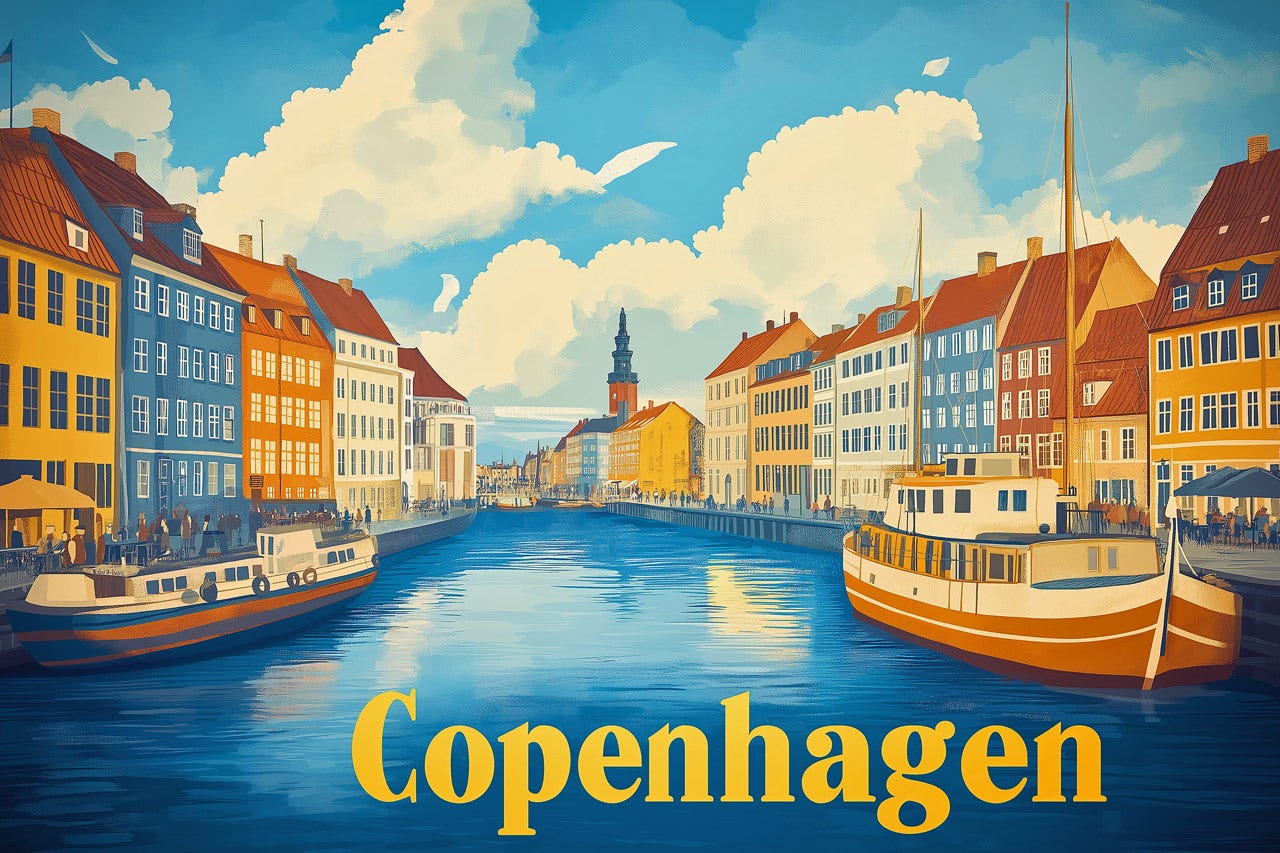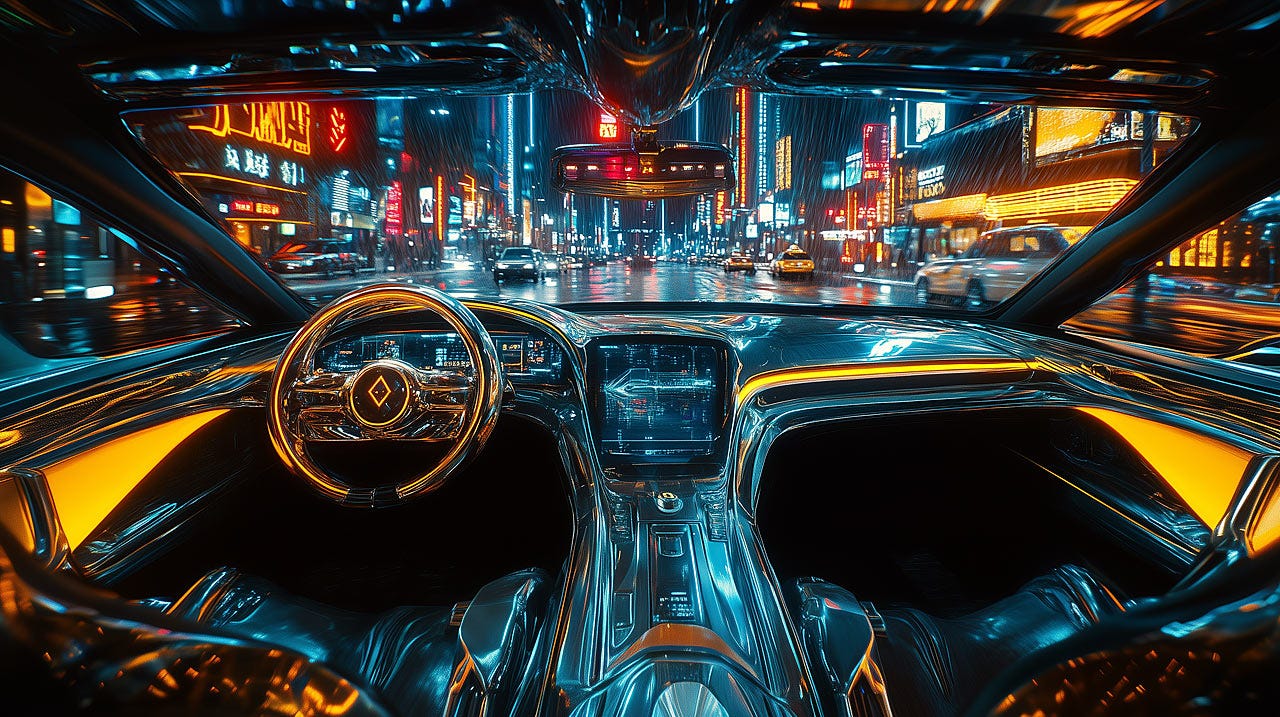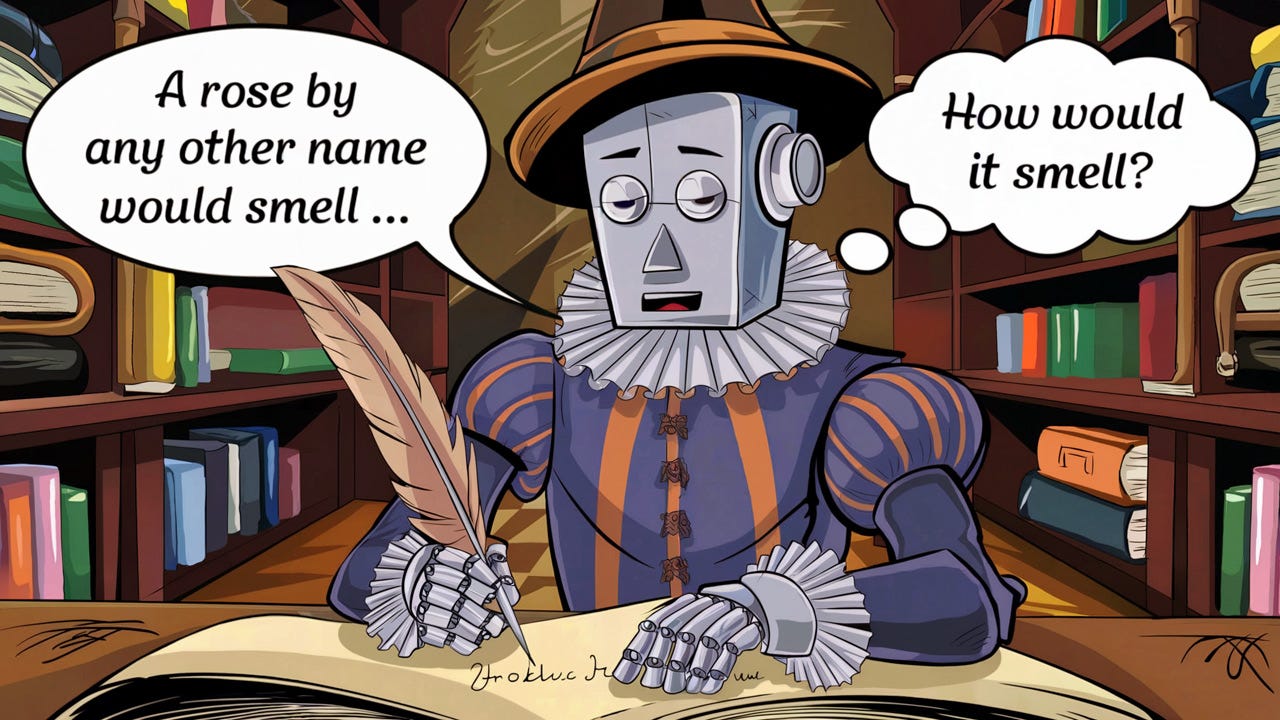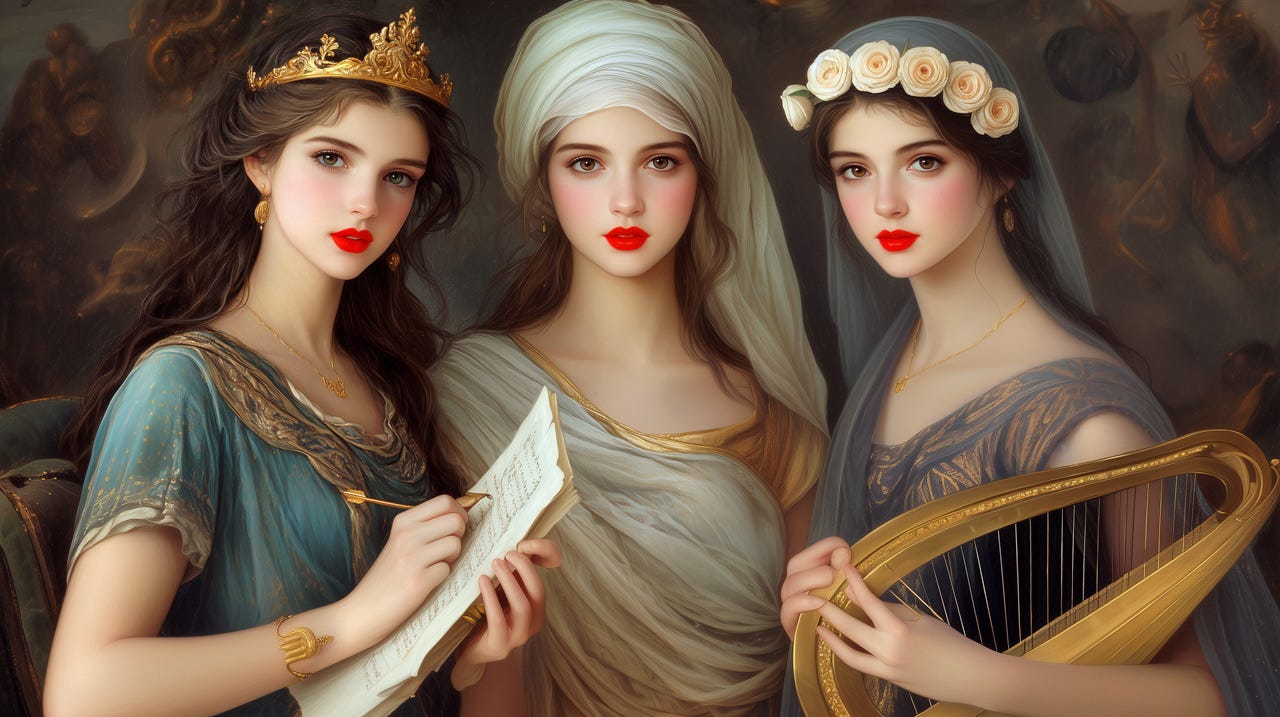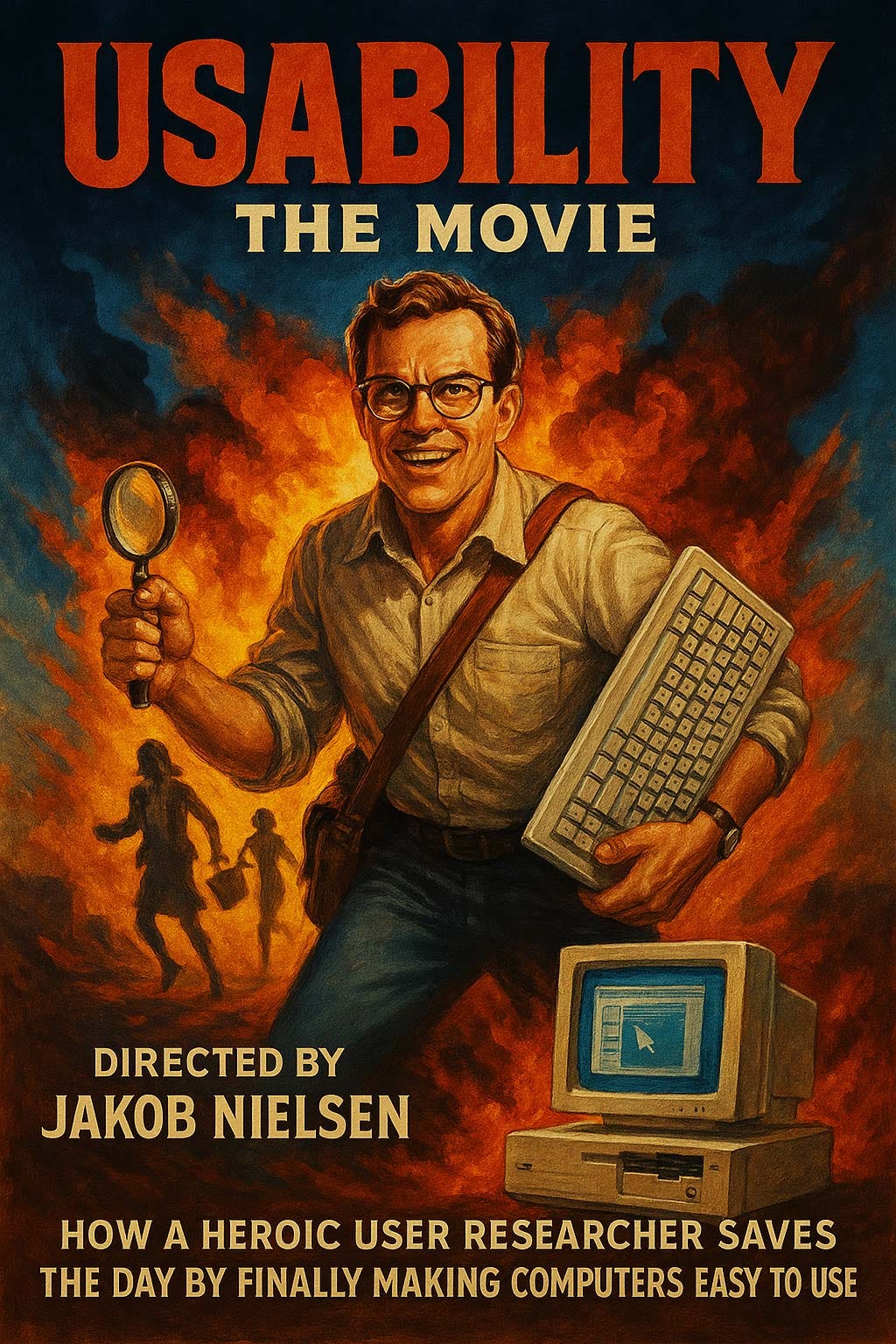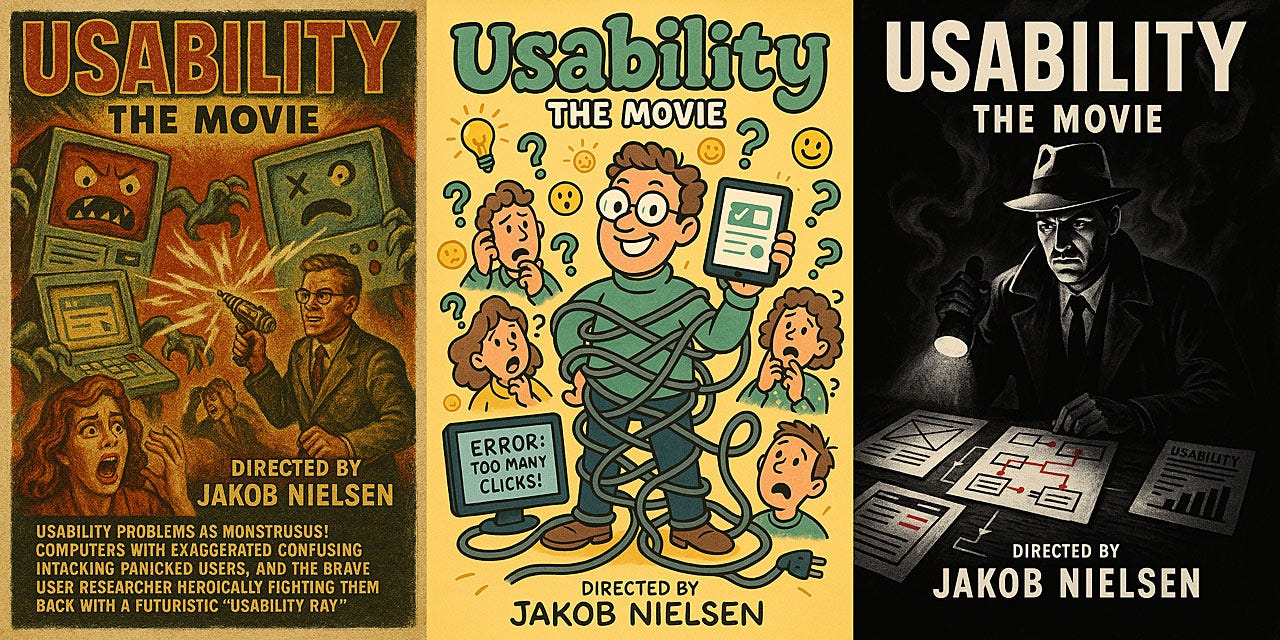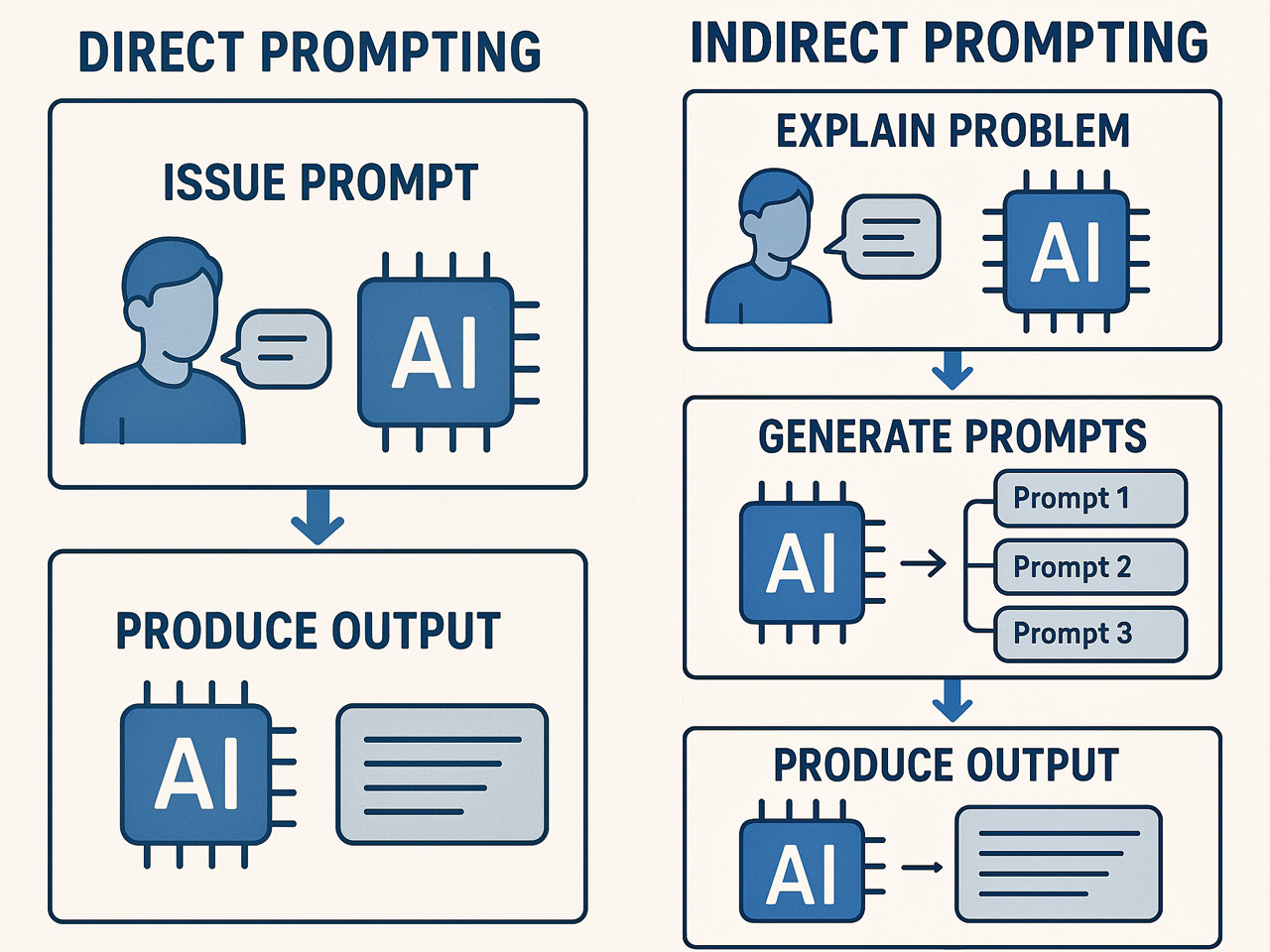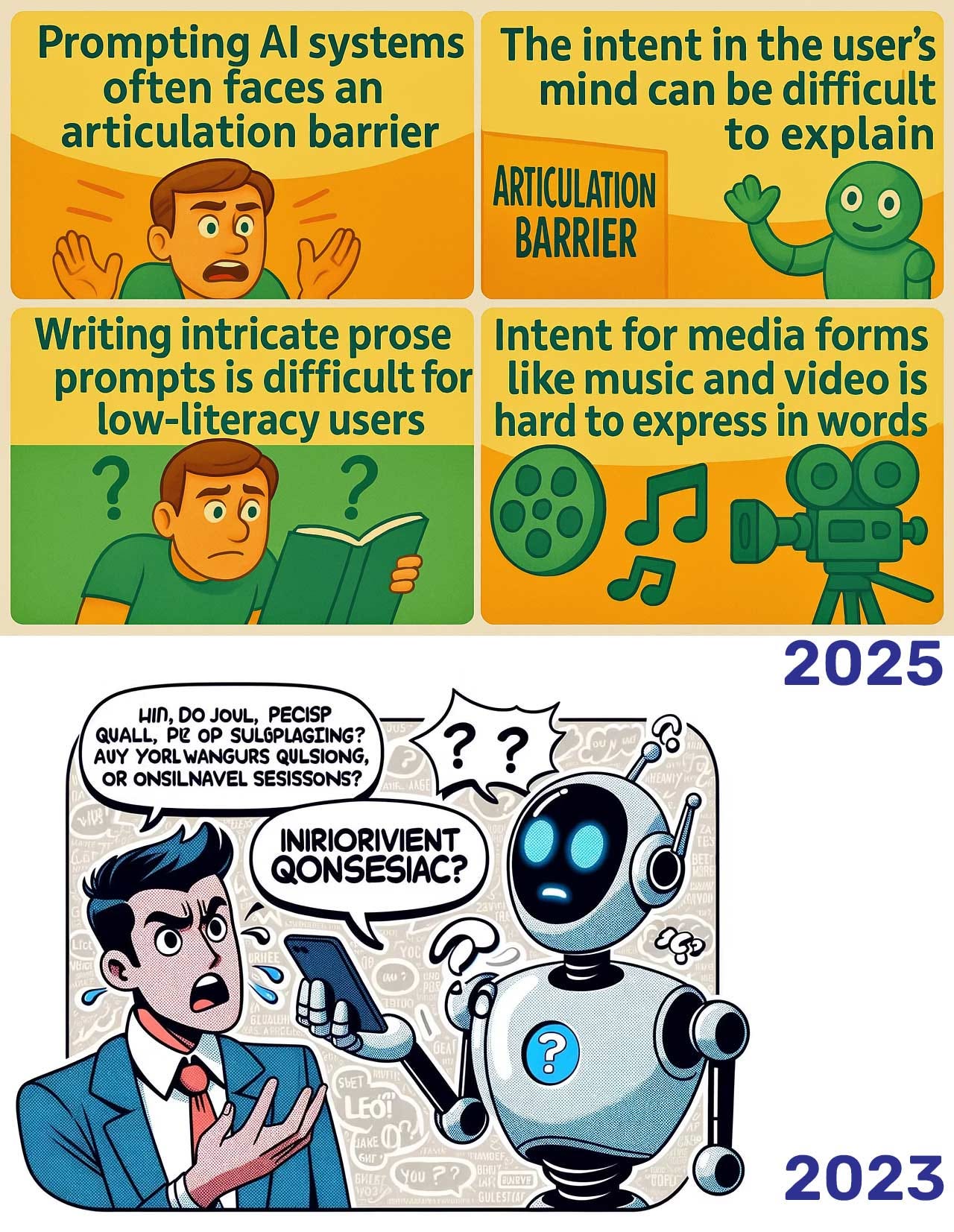UX Roundup: UI vs. UX | Content Con | AI Avoids Traffic Accidents | AI Poetry | Direct vs. Indirect Prompting | Image Gen Progress
Summary: UI vs. UX | Content Design Con Copenhagen | AI reduces traffic injuries by 81% | AI-generated poetry is as good as human-written poetry | Direct vs. indirect prompting: usability movie posters case study | Two years make a huge difference in AI image quality
UX Roundup for April 14, 2025. Happy Easter from UX Tigers. (Midjourney)
Song about this week’s top stories (YouTube, 1 minute).
UI vs. UX: Explained in 6 Minutes
Okay, it's an old debate, with numerous social media memes. But for this exact reason, I thought it was time to settle the question:
UI vs. UX: Jakob Nielsen Explains the Difference (6-minute video, YouTube).
Content Design Con Copenhagen
The Content Design Con is a one-day in-person conference in Copenhagen, Denmark, on September 25, 2025. I know the organizer and expect it to be good.
Content is a major driver of user experience: users visit your website for its content, not to admire your cutting-edge design.
My hometown of Copenhagen can be beautiful in the fall. (Full disclosure: or it might rain all day.) A beer by the canal is a cherished tradition among the locals. On balance, the host city enhances the appeal of attending this year’s Content Design Con. (Midjourney)
AI Reduces Traffic Injuries By 81%
Google’s self-driving car service, Waymo, recently released its safety statistics for 2024. Based on the Uber-like service Waymo runs in San Francisco and Phoenix, its cars were involved in 81% fewer injury-causing crashes per distance driven compared to human-driven cars in the same cities. The number of crashes serious enough to cause airbag deployment was down by 83%, and the number of crashes reported to the police was down by 64%. (Again, relative to the number of accidents caused by human-operated cars driving for the same distance in the same cities.)
Driverless cars are now substantially safer than human-driven cars. (Midjourney)
Of these statistics, I think the injury-avoidance is the most important. Per million miles driven, Waymo’s AI-driven cars were in 0.79 injury-causing accidents, and human-driven cars were in 4.26 such accidents.
The published report doesn’t distinguish between fatalities and lesser injuries. However, it’s likely that the reduction is about the same as the reduction in airbag deployments and all injuries. Currently, around 40,000 people are killed in traffic each year in the United States alone. (Many more are killed worldwide.)
Will Waymo’s safety record transfer to other AI-driven cars? Quite likely, at least in a few years after AI has progressed further. It’s virtually guaranteed that future AI cars will be safer than current models. Let’s say that AI-driven cars can avoid 80% of traffic fatalities in the future. This will mean saving 32,000 lives in the United States each year. And yet, the news headlines will probably look like this:
Likely news coverage if AI-driven cars succeed in reducing traffic fatalities in the United States by 32,000 from the current annual level of 40,000. (Ideogram)
AI-Generated Poetry Is as Good as Human-Written Poetry
Refuseniks claim that AI can’t be creative. That’s demonstrably false, as proven by many research studies. In fact, using AI in the ideation phase is one of the early success stories for applying AI to UX design. The next level of refusal is that AI can’t be creative enough to write fiction, even if it can contribute to product design and other hard-core types of ideation. Also false: AI can, in fact, write creative fiction.
Last bastion of denial: detective stories, maybe, but surely not poetry!
Sorry, a recent paper refutes this canard as well, under the title “AI-generated poetry is indistinguishable from human-written poetry and is rated more favorably” (by Brian Porter & Edouard Machery from the University of Pittsburgh).
This study was based on poems written by the greats of English poetry across history: Geoffrey Chaucer (1340s-1400), William Shakespeare (1564-1616), Samuel Butler (1613-1680), Lord Byron (1788-1824), Walt Whitman (1819-1892), Emily Dickinson (1830-1886), T.S. Eliot (1888-1965), Allen Ginsberg (1926-1997), Sylvia Plath (1932-1963), and Dorothea Lasky (1978- ). For each of these 10 human poets, the authors selected 5 poems actually written by that poet and also asked ChatGPT 3.5 to generate 5 new poems “in the style of” that poet.
(Note that this project used ChatGPT 3.5, which is a truly ancient AI model that’s almost 3 years old. We would expect better results for the AI poems if they had been made with, say, ChatGPT 4.5, which was released in February 2025.)
Shakespeare was one of the poets assessed in this study, both with poems composed by the historical human writer and with AI-generated poems in his style. (Ideogram)
1,634 human readers were randomly assigned to judge poems by (or in the style of) one of the poets for whether a human or an AI wrote them. The raters’ accuracy was lower than chance: only 46.6%, which is significantly lower (p<0.0001) than the 50% accuracy that would result from not even reading the poems but simply flipping a coin.
In other words, the AI-generated poems seemed more human to these readers than the poems written by some of the greatest human poets in history.
In a second study, 696 participants were given a set of 5 randomly selected poems by human authors and 5 randomly selected AI-generated poems. These readers were asked to rate the quality of the poems, using 1–7 scales for overall quality, rhythm, imagery, sound; as well as the extent to which the poem was moving, profound, witty, lyrical, inspiring, beautiful, meaningful, and original; and how well the poem conveyed a specific theme, and how well it conveyed a specific mood or emotion. In total, each poem was thus rated on 14 different scales.
For 13 of the 14 quality attributes, the human-written poems were rated lower than the AI-composed poems. (In 9 cases, the differences were significant at p<0.005 and in 4 cases the differences were only significant at p<0.05.) The only quality attribute where the two classes of authors scored the same was originality. Even for this supposed bastion of human superiority, the humans weren’t actually better than the AI, simply not worse.
Some of the participants were (truly or falsely) informed that poems were written by a human or an AI. Being informed about the (claimed) authorship influenced the ratings, in a clear case of AI stigma: when told that a given poem was written by AI (whether this was true or false), the poem's average score for “overall quality” dropped by 0.8 (on the 7-point rating scale) compared to when participants were told that the same poem was written by a human (whether true or false).
The study participants were representatives of the general public and not poetry experts. This target audience could explain the findings, as regular folks may prefer more straightforward poems than the sometimes complex compositions of human poets. That said, what’s the purpose of art? To appeal to a narrow elite or to serve the people?
There’s no clear answer to that age-old chestnut, but for sure, if you do want to serve a broad target audience, this study shows that AI is superior.
Poetry has been important since antiquity. The old Greeks dedicated a full third of their 9 muses to support poetry: Calliope (muse of epic poetry, depicted writing on a tablet or scroll), Polyhymnia (muse of sacred poetry and hymns, depicted wearing a tunic and veil), and Erato (muse of lyric or erotic poetry, represented with a lyre and sometimes a wreath of roses). (Midjourney)
ChatGPT’s version of the 3 muses of poetry, using a photorealistic style. In addition to the goddesses looking more realistic, Erato’s lyre also looks more like the actual instrument than it does in Midjourney’s version.
Direct vs. Indirect Prompting: Usability Movie Posters Case Study
In the past, I have failed in attempts to use AI to generate fake movie posters for a usability-themed film. ChatGPT 4o’s native image mode did better in my recent attempts, though I still don’t find the results fully compelling.
However, they are already good enough that I recommend trying to create some fake movie posters for team events.
My first workflow used direct prompting: I simply asked ChatGPT to make a poster on the theme, without specifying further details: “Draw a movie poster in classic action movie style for a film titled "Usability: The Movie" which is directed by "Jakob Nielsen" and is about how a heroic user researcher saves the day by finally making computers easy to use.”
Movie poster for a non-existing film, designed with direct prompting. The artwork is drawn quite nicely, but the content is not particularly interesting due to the lack of details in the prompt. I do find it endearing that ChatGPT included a picture of the original IBM PC. Clearly, the stereotypical attribute of a “researcher” is a magnifying glass. I've been guilty of using this myself in other images you may have seen in this newsletter. (ChatGPT 4o)
As a second attempt, I asked ChatGPT 4.5 and Grok 3 to write eight different prompts for me, focusing on usability-themed movie posters in various genres, and to include specific details in each prompt to specify both visual elements and stylistic choices. This is an example of prompt augmentation and also employs the old AI-ideation trick of asking for more variations than you need, so that you have a choice.
Here are the three prompts I turned into movie posters:
“Draw a retro 1950s horror/sci-fi B-movie poster titled 'Usability: The Movie,' directed by Jakob Nielsen. Illustrate usability problems as monstrous computers with exaggerated confusing interfaces attacking panicked users, and the brave user researcher heroically fighting them back with a futuristic 'Usability Ray.' Employ vintage color palettes, exaggerated expressions, distressed textures, and bold, sensationalized typography typical of old-fashioned drive-in theater posters.”
“Draw a movie poster for 'Usability: The Movie', directed by Jakob Nielsen, in a lighthearted comedy style. Show the user researcher in a funny predicament, such as being tangled in oversized computer cables or surrounded by cartoonish users with exaggerated confused expressions and question marks overhead. The researcher holds up a tablet displaying a simple, elegant interface, grinning confidently as the solution. Include playful icons like lightbulbs (ideas) and smiley faces (happy users) bouncing around. Use a bright, cheerful color scheme with greens, yellows, and blues, and add humorous details like a computer screen with a silly error message (e.g., 'Error: Too Many Clicks!'). The title 'Usability: The Movie' should be in a fun, bubbly font, with 'Directed by Jakob Nielsen' in a smaller, whimsical font at the bottom.”
“Draw a moody film noir poster for 'Usability: The Movie,' directed by Jakob Nielsen. Illustrate the hero as a detective-style user researcher holding a flashlight illuminating a cluttered desk covered with cryptic interfaces, labyrinthine flowcharts, and usability test reports. Use high-contrast, stark black-and-white visuals with smoky shadows and dramatic chiaroscuro lighting. Include subtle hints of red highlights to emphasize usability breakthroughs.”
3 styles of movie posters: horror, comedy, film noir. For these posters, I used indirect prompting, utilizing an initial extra prompt to elicit a variety of more detailed prompts, from which I selected the best for each movie genre. (ChatGPT 4o)
Indirect prompting, as used in the second workflow, seems worth the small amount of extra time it requires. In this case, I believe the film noir poster is the most successful at conveying usability while maintaining a dramatic feel.
Indirect prompting requires an extra step for making a variety of detailed prompts from which the user selects the one to execute. (ChatGPT)
Two Years Make a Huge Difference in AI Image Quality
I created a new comic image for my article about the AI articulation barrier, published in May 2023. Compare the new image with the old one, which is only one and a half years old (I added that bottom image to the article in the fall of 2023, after OpenAI launched Dall-E):
Images illustrating the articulation barrier, both generated with ChatGPT. The upper image (from April 2025) used its native image model, whereas the lower image (from October 2023) used Dall-E 3.
We have come a long way. AI images will be awesome in another two years. Can’t wait.
About the Author
Jakob Nielsen, Ph.D., is a usability pioneer with 42 years experience in UX and the Founder of UX Tigers. He founded the discount usability movement for fast and cheap iterative design, including heuristic evaluation and the 10 usability heuristics. He formulated the eponymous Jakob’s Law of the Internet User Experience. Named “the king of usability” by Internet Magazine, “the guru of Web page usability” by The New York Times, and “the next best thing to a true time machine” by USA Today.
Previously, Dr. Nielsen was a Sun Microsystems Distinguished Engineer and a Member of Research Staff at Bell Communications Research, the branch of Bell Labs owned by the Regional Bell Operating Companies. He is the author of 8 books, including the best-selling Designing Web Usability: The Practice of Simplicity (published in 22 languages), the foundational Usability Engineering (28,228 citations in Google Scholar), and the pioneering Hypertext and Hypermedia (published two years before the Web launched).
Dr. Nielsen holds 79 United States patents, mainly on making the Internet easier to use. He received the Lifetime Achievement Award for Human–Computer Interaction Practice from ACM SIGCHI and was named a “Titan of Human Factors” by the Human Factors and Ergonomics Society.
· Subscribe to Jakob’s newsletter to get the full text of new articles emailed to you as soon as they are published.
· Read: article about Jakob Nielsen’s career in UX
· Watch: Jakob Nielsen’s first 41 years in UX (8 min. video)





